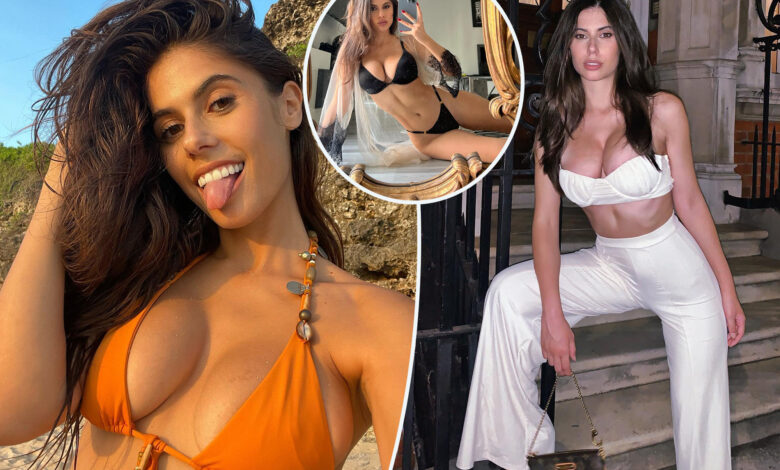I’m a model who’s so hot that people accuse me of being AI — it’s complete insanity

They think she looks too good to be true.
Hyperrealistic artificial intelligence fakes have become so prevalent online that “attractive” people are now being mistaken for AI.
An Italian model claimed that she’s often accused of being a bot amid the proliferation of AI, which is known for generating flawless representations of people online.
“It’s extremely frustrating that people think I’m an AI model,” Ines Trocchia, 29, told Jam Press of the unfortunate phenomenon. “It’s complete insanity to me.”
The Naples-based influencer, who’s collaborated with high-end fashion brands from Philip Plein to Dolce & Gabbana, frequently uploads immaculate-looking glamor shots of herself for her more than 1.6 million followers on Instagram.
Trocchia says she’s spent years in front of the camera perfecting her craft and likes to show off the fruits of her labor.
Unfortunately, due to the proliferation of AI-generated supermodels online, many people wonder if she’s a genuine artifact — or simply another too-hot bot.
“It’s shocking to me that some people question if I’m real,” lamented Trocchia. “I don’t think my profile looks like that of a bot.”
The bombshell added, “You can always tell when an AI model has been used because they have the same sad expression in every single photo and video.”
Her case perhaps presents one of the pitfalls of being — to borrow the words of Ben Stiller in “Zoolander” — “really, really, really ridiculously good-looking” in the AI age.
Trocchia finds her predicament especially frustrating as she’s “got highlight reels that show me on a catwalk and things like that.”
This technological fallout entails more than just a case of mistaken AI-dentity: Troccia claims that online catfishers often hijack her likeness to generate views on social media.
“I’ve noticed bot accounts are even stealing my body and putting artificial faces on it,” she lamented. “One of my videos was outright stolen by a bot account and got more views on there than it did on my own profile.”
She’s not alone with the issue, either.
“I spoke with some of my colleagues and friends in the industry and they have the same problem,” the proud natural beauty added.
Trocchia claims that by blurring the line between the real and virtual worlds, AI contributes to already stratospheric beauty standards, which she finds bad for both the modeling industry and society overall.
“Some of the AI accounts that I have seen are completely impossible standards,” she explained. “The models tend to be super baby-faced with breasts and features that aren’t in proportion to their bodies.”
Troccia argued — perhaps somewhat ironically, given her vocation — that it’s “crazy” to strive for an “unbelievable level of perfection.”
In other words, beauty is in the AI of the beholder.
And while the model acknowledges that the tech has its place — she admits to using the tool to edit photographs — creating superhumanly hot AI robots is a bridge too far in her view.
“It’s completely different when you’re using it to create a person who doesn’t exist,” Trocchia declared.
Unfortunately, cases like Trocchia’s could become commonplace as the omnipresent tech becomes increasingly adept at engineering digital representations of everyone from online boyfriends to politicians.
Despite proliferating virtually, these fabrications can have serious ramifications in the real world.
In May 2023, an AI-generated photo of a fake explosion at the Pentagon spread on social media – prompting mass confusion among users and a brief selloff in the U.S. stock market.




